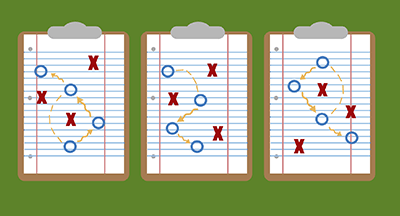
Chances are you’ve heard of the Golden Rule.
This maxim transcends culture and religion, delivering profound wisdom in a simple package: Treat others the way you want to be treated. We’ve repackaged that wisdom, formulating our own Golden Rule of Interoperability: Treat others’ data the way you’d want your data to be treated.
Essentially that’s a philosophical way of saying data privacy is important and commands awareness and respect. Let’s take a look at how we can turn this new Golden Rule into action in order to protect the privacy of students.
What is interoperability?
To put it simply, interoperability is the ability of computer systems to inter-operate, or “talk” to one another and exchange information.Imagine a house with many rooms. Each room represents a computer system your district uses. When systems are not inter-operable, it’s as if all the doors are locked. No people—or in our case, information—can pass between the rooms. But with interoperability, the doors are unlocked and thrown wide, and information is free to move between the rooms.
Interoperability and FERPA
For many district employees, this flow of data is a lifesaver, significantly reducing data entry and administrative time. But it also means that those who handle data need to take even greater caution. It may be easy to import student data into, for instance, an intriguing new app or online learning program—but it’s important to think beyond what the app or program can offer to what the program is going to do with this data.FERPA, or the Family Education Rights and Privacy Act, is a law that protects the privacy rights of student education records. It states that schools have an obligation to protect student records and release them only in certain circumstances. School districts, then, must be very careful about what they do with that data.
When you’re considering using some shiny new program, consider: Has it been vetted by your IT pros? Have you read the terms and conditions? I know, I know—who has time for terms and conditions, right? But this is no place to cut corners. That fine print may just reveal that this fantastic new program is going to share your student data with a third party.
It’s all about awareness. Pay attention to where you’re allowing the data to flow. Don’t assume the best of new, techy tools; assume the worst until proven otherwise.
Interoperability and security
It’s not always our own intentional decisions that can cause issues. An unfortunate side effect of interoperability is that when data is in more places, there are more opportunities to be hacked. Let’s return to that house metaphor. Each room (which represents a software system) has a window to the outside world that can be pried open by an intruder—or left ajar by a trusting household member. The more windows in the house, the better chance an intruder has at finding a way inside.Security is always important, but especially right now, as a lot of people are working remotely. There likely aren’t as many security measures within employees’ at-home networks as there are within the district’s, making it easier to break in. Hackers know this too—and trust me, they’re using it to their advantage.
Make sure your district has implemented strong data security measures on all its devices. When transferring data, it should be through a secure means so the data can’t be intercepted. If you haven’t already, considering implementing a security team at your district. IT leaders are busy, and having a team dedicated solely to security will ensure it never gets pushed to the back burner.
The bottom line
There’s no question that interoperability is a good thing. But like many good things, it can lead to problems if not taken care of properly. So be sure to train employees to be mindful of data privacy and security practices and regularly update your security measures to keep data out of hackers’ greedy hands. Yes, this kind of diligence can be difficult, time-consuming, and expensive. But it’s so worth it.It all comes down to treating students’ data as if it were your own. Follow the Golden Rule of Interoperability, and you’ll be golden.
Follow-up resources
We’ve really only dipped our toes into the waters of interoperability. If you’re ready to cannonball, here are some other resources for you:Let’s Change the Integration Conversation
Playing Nice: The EdTech Interoperability Landscape
The 5-Step EdTech Integration Checklist
FERPA and Your Student Information System
Vetting Apps Across the District
EdTech Playbook: Interoperability
How Ed-Fi Standards Simplify Student Data Management
WHAT'S NEXT FOR YOUR EDTECH? The right combo of tools & support retains staff and serves students better. We'd love to help. Visit skyward.com/get-started to learn more.

|
Advancing K12 Staff Edtech Thought Leaders |




